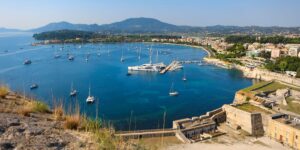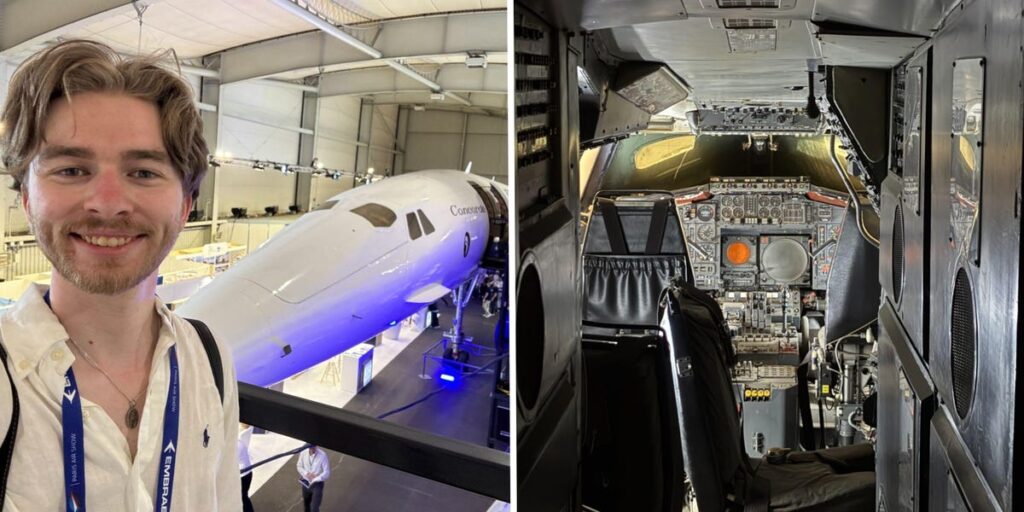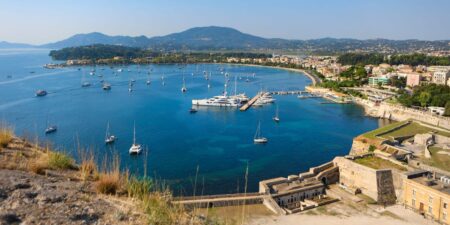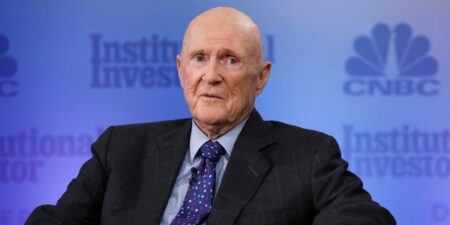X
Copy link
Impact Link
Save
Saved
Read in app
subscribers. Become an Insider
and start reading now.
Have an account? .
- I went on board two Concordes, including the first prototype, at Paris’s air and space museum.
- Concorde, retired in 2003 due to costs and a crash, flew at more than twice the speed of sound.
- Boom Supersonic aims to carry passengers by 2029, reviving interest in supersonic travel.
Commercial flights faster than the speed of sound are one of the few historic innovations that have fallen out of favor, but that might not stay the case for long.
Concorde revolutionized air travel. It could fly up to Mach 2.04 — more than twice the speed of sound, or around 1,350 mph at its cruising altitude of 60,000 feet.
However, huge operating costs and a fatal crash led to the Anglo-French airliner being retired in 2003.
When I attended the Paris Air Show last month, I had the chance to go on board two Concordes: the first prototype and one of the last to be built.
Both are displayed by France’s national air and space museum, and the jets felt like precious exhibits, with much of the interior behind glass.
Nonetheless, it was fascinating to get up close to the seats, see the cockpit, and experience what it was like to walk down the aisle of a Concorde.
While Concorde won’t fly again, it made me more excited for the potential of Boom Supersonic. Its prototype went supersonic in January, and its Overture airliner is expected to start carrying passengers in 2029.
At the 2025 Paris Air Show, I came across a conference hall with a plane in the middle of it.
This hall is actually part of the Musée de l’Air et de l’Espace, which is part of Paris’s Le Bourget Airport and can be visited year-round.
After a bit of walking around, I found the line to tour a Concorde.
As a journalist, I was able to get a ticket for free. Usually, a “boarding pass” ticket for the museum costs between 6 euros and 17 euros ($7 to $20), depending on your age.
I was amazed to find out this was actually the very first Concorde.
Concorde 001, with the tail number F-WTSS, was the first prototype built and made its first flight in 1969.
It was retired to the museum four years later.
It was a bit disappointing that the interior had been stripped, but there was still a lot to learn.
Information boards shared more about the history of this momentous airplane. For example, it was used to carry out scientific experiments during a 1973 eclipse, with cameras and windows installed in the roof.
There were several flight instruments behind glass, and a chance to glimpse the historic flight deck.
Concorde was the first airliner to use fly-by-wire controls, which means electronic signals are sent to a computer that processes the pilots’ inputs.
It was previously only used on military aircraft, but is commonplace today. The technology helped the A320 become Airbus’s first major success.
Concorde’s cockpit also included a third seat for a flight engineer, and controls for the “droopsnoot” — a lengthy, pointed nose. Used to add aerodynamic efficiency, the nose could be drooped 10° for more visibility during takeoff and landing.
Leaving the first Concorde, it was great to see the original colorful livery with the names of the manufacturers.
The British Aviation Corporation and France’s Sud Aviation jointly built and developed Concorde. (Mergers and acquisitions over the years saw the former become part of BAE Systems, and the latter part of Airbus.)
Concorde was a symbol not just of national pride for the UK and France but also of international cooperation between them. Indeed, the jet’s name comes from the French for “agreement” or “union.”
Meanwhile, work on the Boeing 2707, a larger and faster supersonic airliner, was scrapped in 1971.
The Soviet Union’s Tupolev Tu-144 made its maiden flight just two months before Concorde.
I crossed a bridge onto Concorde 213, the 17th one to be built.
Just three more Concordes were made after this one. It flew from 1978 to 2003.
Even though Concorde is a relic of the past, I liked how the differing logos showed how it lasted for decades, from the meticulous font of the 1960s to the bold and minimalist Air France logo of the early noughties.
This plane was actually once painted in a Pepsi livery for an advertising campaign.
Pepsi spent $500 million on a huge rebranding effort in 1996, adopting its blue color scheme.
Sierra Delta, as it is known for the last two letters of its registration, was painted blue for two weeks in April of that year. The wings were kept white due to concerns over the fuel temperature.
Air France needed special permission because the Concorde was only certified to be painted white, as darker colors tend to retain more heat.
This time, there were plenty of seats on board to have a look at.
They were behind glass, so I couldn’t sit down and test one out. I already knew Concorde was relatively small inside, with its four-abreast layout, but I was still surprised that these seats wouldn’t look out of place on one of today’s regional airliners.
Concorde could carry between 92 and 128 passengers, depending on the layout.
Details like the exit signs and bathrooms were still visible as well.
Walking through, I was again slightly taken aback by the low ceiling. Concorde’s cabin height was just 6 feet 5 inches — an inch shorter than an Embraer E175 and 10 inches shorter than a Boeing 737.
British Airways and Air France made up for the small cabin with top service.
Caviar, lobster, and Champagne weren’t uncommon.
Seeing the full rows of seats, glassed off under dim lighting, felt eerie and almost somber.
It was another reminder that Concorde is a vestige of a past “golden era” of luxury flying.
There was only one fatal accident involving Concorde, but it was hugely damaging.
In July 2000, a Concorde crashed shortly after takeoff when it ran over debris on the runway, and tyre fragments ruptured a fuel tank. All 109 people on board were killed, as well as four people in the hotel it crashed into.
As the investigation went on, all Concordes were grounded until November 2001.
Concorde was ungrounded, but the plane’s economics remained a concern.
Concorde only stayed in service for another two years, with British Airways retiring its final one in October 2003.
While the crash damaged the plane’s image, Concorde’s ultimate undoing was its huge operating costs.
Its four engines burned huge amounts of fuel. Plus, its routes were limited by opposition to noisy sonic booms.
The economics have since become notorious in the aviation industry.
For example, after postponing its plans for a hydrogen-powered plane, Airbus CEO Guillaume Faury said in April that it wouldn’t be competitive enough with other jets and hence risked becoming “a Concorde of hydrogen.”
However, supersonic airliners are on their way back.
Denver-based Boom Supersonic has been developing a new supersonic jet called Overture. It’s smaller than Concorde, expected to carry between 60 and 80 passengers, and would fly slightly slower at Mach 1.7.
China’s state-owned planemaker, Comac, is also developing a supersonic airliner called the C949, although few details are available.
Boom’s XB-1 prototype went supersonic for the first time in January — and made another major breakthrough.
Boom announced in February that the flight didn’t produce a sonic boom that was audible from the ground.
It dubbed this “Boomless Cruise” and is thanks to a physics term called Mach cutoff. Esssentially, if the sound barrier is broken at a high enough altitude, the sound waves can essentially U-turn in the atmosphere before reaching the ground.
Then, in June, President Donald Trump issued an executive order directing the Federal Aviation Administration to repeal a 52-year-old law that limited flight speeds over land, so long as there’s no sonic boom audible from the ground.
Overture has received 130 orders and pre-orders from customers like United Airlines, American Airlines, and Japan Airlines.
Boom says Overture could connect New York to London in just three hours and 45 minutes — almost twice as fast as current airliners.
It hopes to start carrying passengers in 2029.
Read the full article here
















